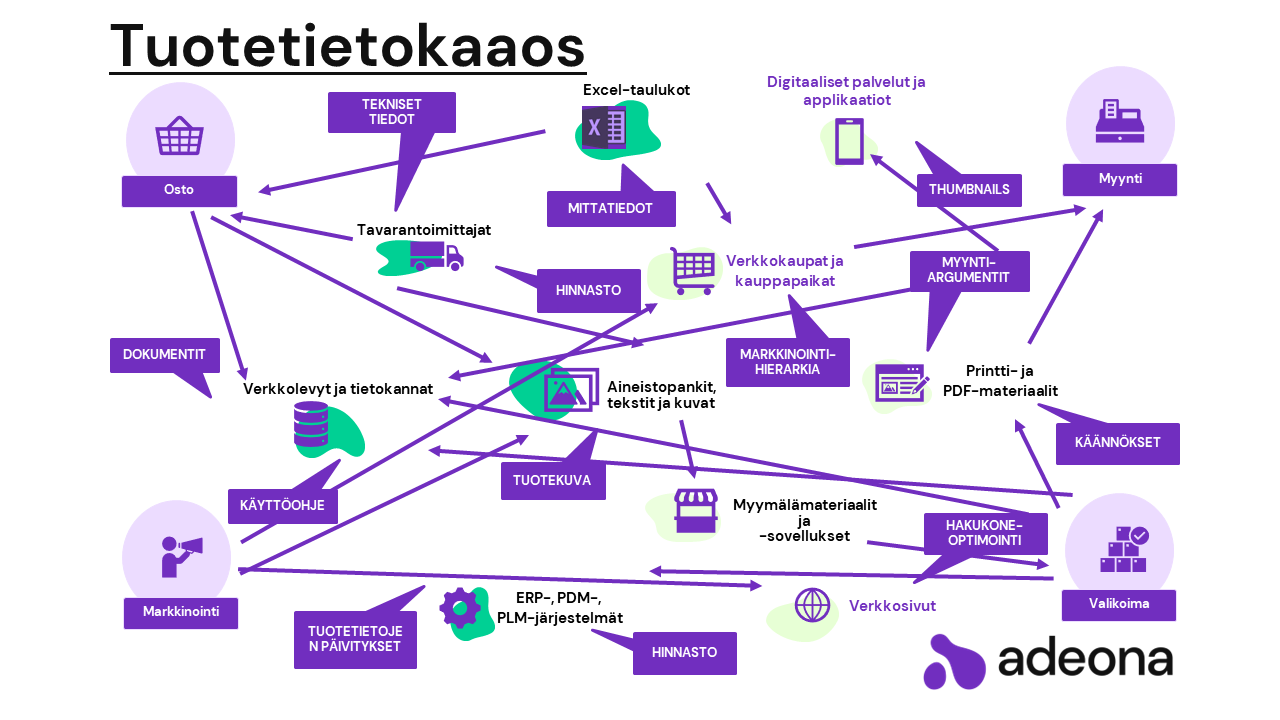1. Does your product information management process look something like this?

If the answer is yes, contact us and we will help.
2. Do you want to offer the best possible customer experience?
PIM system is in this case an integral part of the solution. Through centralized product information management, you offer high-quality, accurate and up-to-date product information from one source to all channels for all stakeholders – both customers and your own staff.
3. Do you want more power for product marketing?
PIM and those based on it of publication automation solutions with a few clicks of a button, you can publish e.g. campaign brochures, product catalogs or cards, make price lists or brochures, price tags and shelf edge labels for stores... In publication formats e.g. PDF, Excel, PowerPoint, InDesign.
4. Do you want to be ready for quick strategic changes of direction?
If the basis of product information management is in order, it is easy to introduce new release channels and application targets, as well as new language or country versions. Through PIM's ready-made interfaces, you can offer product information to, for example, a new retailer's online store or website, the customer's purchasing system or any other channel where you want to use it. You don't have to reinvent the wheel every time.
5. Do you want to get rid of unnecessary manual work steps?
PIM can be used to automate many routine tasks related to product information management, which take a lot of time if done manually (and are also usually the most boring tasks of all). From PIM, the right information ends up being used by the right target groups automatically. In addition, you can get rid of unnecessary copy-pasting, when, for example, creating various Office or InDesign product publications can be done either completely automatically or with a few button presses instead of spending weeks.








